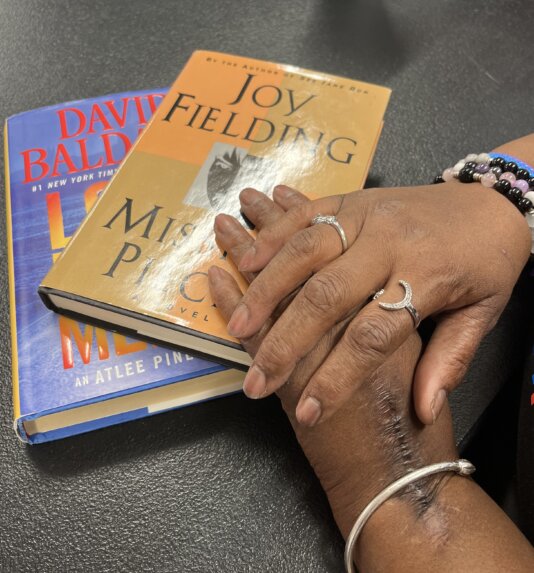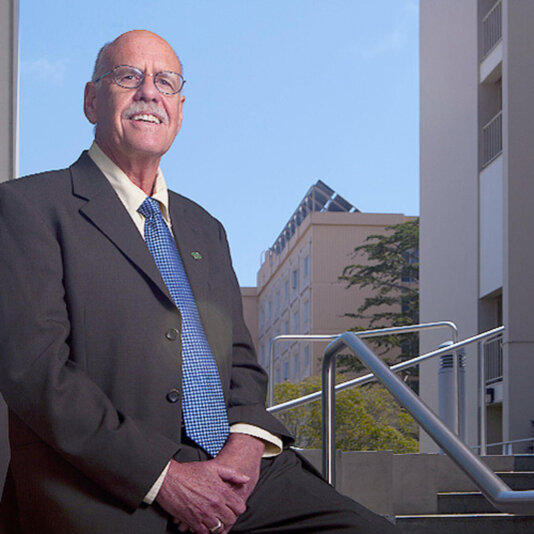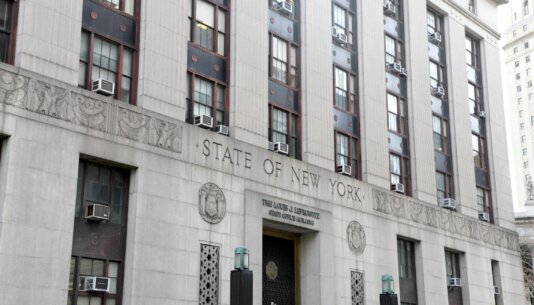- About
- Topics
- Picks
- Audio
- Story
- In-Depth
- Opinion
- News
- Donate
- Signup for our newsletterOur Editors' Best Picks.Send
Read, Debate: Engage.
| August 08, 2024 | |
|---|---|
| topic: | Arts |
| tags: | #art, #Mental health, #mass incarceration |
| located: | USA |
| by: | Sophie Abeles |
The US accounts for just 4 per cent of the world's population but holds 16 per cent of its incarcerated individuals. Americans also consume more drugs than any other country. And although approximately two-thirds of people in local jails have substance use disorders, only 19 per cent of prisons nationwide provide access to medication-assisted treatment.
Rehabilitation and criminal justice systems struggle to provide comprehensive care as people repeat the same harmful behaviours that led them to enter these systems in the first place.
At select rehabilitation centers and prisons across the US, however, an alternative method is used to help people in recovery and prevent recidivism: art therapy.
For adults in addiction recovery, art therapy can improve self-esteem, encourage emotional expression and provide a safe outlet for them to explore painful trauma, according to a comprehensive study on art and psychotherapy. Art-based activities also help reduce stress and feelings of isolation in patients, feelings that can correlate with substance abuse.
Addiction recovery treatment is hard to come by, and alternative therapy, like art therapy, is offered in only a handful of centres across the US. Of the 54.6 million Americans who needed recovery assistance in 2022, only 26 per cent received adequate substance abuse treatment, according to NSDUH. This indicates that even those who receive treatment may not find it entirely helpful.
A women’s rehabilitation centre in Hagerstown, Maryland called Lasting Change has incorporated group counselling and art therapy in its care practices. One notably impactful programme has been a book club called Ladies for Lasting Literacy. The club encourages women in recovery to attend weekly sessions where they can read, write and share ideas with others freely.
"I've gone from passivity to action through reading. When I got addicted, I lost all access to my storage unit full of books. Now, I have a library card and I can take the bus to the library to read," Simone, one of the club’s first members, told FairPlanet.
According to the National Institute on Drug Abuse, participation in group counseling, such as the Ladies for Lasting Literacy programme, can be an effective tool for people in recovery to abstain from drug use. It further states that methods like replacing substance use with other rewarding activities, such as reading or volunteering, can significantly aid the recovery process.
Another participant at Ladies for Lasting Literacy, Tiffany, shared with FairPlanet that the club reignited her interest in working with children.
"I wanted to be able to give back and I didn’t know working in childcare was still an option. The joy of being around kids inspires me," she explained.
After months of volunteering with the club at a local children’s nursery, Tiffany was hired to work there part-time.
At the Center for Justice Innovation in New York City, Senior Social Worker Taylor Lauesen wrote in an email that having access to art therapy has helped people process trauma and rebuild: "There are several community providers we work with that have creative workshops that represent an outlet for folks. I’ve seen people in recovery start to forgive themselves, heal, and mend broken relationships."
Also at the Center for Justice Innovation, Senior Social Worker Maggie Ferreira added in the same exchange that residential rehabilitation centres such as the Odyssey House in New York City offer art therapy, an activity she believes is a useful coping mechanism for people in recovery.
As per a study published in 2014, only 36.8 per cent of treatment programmes in the US offered art therapy to patients. Yet according to experts, the arts are an engaging, non-punitive outlet for people to express themselves and process trauma.
Art programmes in prisons similarly offer an opportunity for self-expression among incarcerated individuals, which has been shown to foster a sense of community, reduce animosity and result in a lower likelihood of recidivism among participants.
Although these programmes are difficult to come by in most US prisons, organisations such as Pen America work across the entire nation, providing creative mentorship and writing opportunities to incarcerated adults.
The benefits of arts implementation in prisons are transformative, said Larry Brewster, professor emeritus of policy analysis at the University of San Francisco, California.
"In my experience and through my research beginning in 1983, I've observed hundreds of incarcerated men and women discovering untapped skills, new passions and the rewards of introspection and self-discipline," Brewster told FairPlanet. "The arts can provide a refuge and a pathway to fundamental change."
A shining example of these transformative benefits can be found at the Sing Sing correctional facility in New York, which has implemented a programme known as Rehabilitation Through The Arts (RTA). The programme provides music and voice classes, acting programmes and visual arts classes to people serving prison sentences at the facility.
Last month, A24 released Sing Sing, a motion picture that tells the story of RTA and its impact on participants, many of whom had no prior acting experience or interest in the arts before joining.
Alumni of the RTA programme are centre stage in the film, which was 7 years in the making, according to the film’s director, Greg Kwedar. RTA found that less than 3 per cent of participants return to prison – a stark contrast in comparison to the national statistic, which observes over 60 per cent of all US prisoners returning to prison within three years of their release.
A qualitative study conducted in prisons located in Soledad, San Quentin and New Folsom, California, similarly shows that six months after release, rates of parole violation for art therapy participants are 15 per cent lower than for non-participants. After two years, this difference climbed to 30 per cent.
Even so, prisons in the US have a long way to go, said Taylor Lauesen of the Center for Justice Innovation in New York; and most, she added, are not rehabilitative.
Lauesen explained that many people who exit the justice system return home with little support, which can be a slippery slope to re-entry.
For incarcerated or formerly incarcerated adults, artistic expression can serve as a long-term coping mechanism for healing emotional wounds and as a tool for developing important life skills according to Brewster, a Professor at the University of San Francisco.
The United States has both a mass incarceration and substance abuse problem. Jails are intended to punish people, not to rehabilitate those with mental health or substance use issues, states a press release published earlier this year by the Prison Policy Initiative.
A growing number of Americans are turning to alternative therapies and restorative justice initiatives, such as art programmes, as part of a broader movement to address the root problems affecting vulnerable populations across the country.
Image by russn_fckr.
By copying the embed code below, you agree to adhere to our republishing guidelines.


